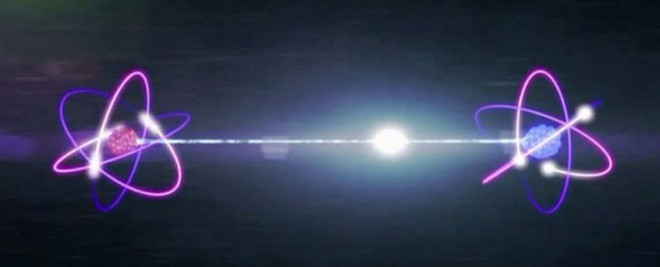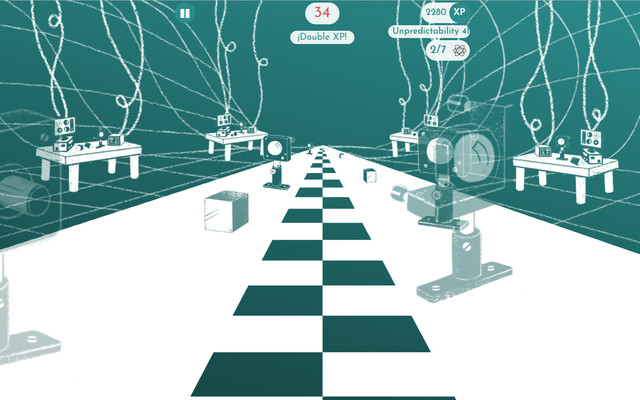More than 100,000 people played an electronic game to prove Einstein was wrong, they just did it and couldn't do it
Quantum disorder - just like its name - is very confusing and ambiguous.
On November 30, 2016, there are 100,000 gamers from all over the world simultaneously online and playing together: they do so to "tease" Einstein.
These concepts of physical operation are perfectly logical, but there is a concept that is not reasonable at all, but it still works! That physics concept is "" , called Einstein's "bizarre activity at a distance".

Great human physicist thought that there was some hidden effect that made this phenomenon happen.
Quantum entanglement causes two matter particles to transfer signals to each other at speeds faster than the speed of light. Great human physicist thought that there was some hidden effect that made this phenomenon happen. If we continue to deepen our understanding of quantum physics, we will understand what is going on.
Turns out Einstein was wrong: we still don't know what's going on. The experiment took place in 2016 led by physicist Morgan Mitchell at the Spanish Photon Science Institute. The experiment called The BIG Bell Test shows that simply "quantum" quantum mechanics .
The test subjects in this test are gamers. The only thing they need to do is to press the button at random, as much as possible.

The thing that gamers need to do is just click the button at random, the more crazy the better.
The "quantum puppet" cluster is used to describe things that are located in two places very far apart, but mathematically they are closely linked. A second measurement will have an immediate effect on B. Scientists have discovered this strange event from the early days of quantum physics, in 1935.
Apply this real world to your imagination. You have an orange and an apple, put it in two bags, and give it to two different kids in different directions. One boy opened his bag and saw an orange, he would know he had an apple right away. Obviously, the first child seeing an orange (measuring it as an orange) did not make the fruit in the other's bag naturally turn into an apple. The one standing outside will be able to tell immediately which boy has the fruit. That's what Einstein thinks is the way in which quantum physics works.
But, based on the work of the late physicist John Stewart Bell, it is not the mode of operation of quantum physics. If the orange and the apple follow all the laws of quantum mechanics, it must be both orange and apple, until it is opened - measured. When the bag is opened, the identity of the bag is confirmed. Although these two fruit bags are on both ends of the universe, it will still follow this rule.
No matter what information you know about the contents of the bag, you never guess what is in your bag, until the measurement - the opening of the bag is done. There is no mysterious argument that will allow you to guess what is in your pocket.
There have been countless other experiments of Mr. Bell proving this bizarre quantum effect. These tests are based on the fact that after multiple measurements, the results can only occur when and only if the particles have carried out "bizarre action taking place at a distance" - the particles that has quantum entanglement.
The Bell test will always need a tangled system in which, between tangled particles is a very long distance. But newer Bell tests add rules, which will prevent the measurement from affecting research results.
Simply put, the tester can only hold the device to detect random or apple or orange. This is purely random, there is no "invisible force" behind the fruit selection.
John Stewart Bell suggests that to overcome this problem, one can rely on the randomness of the human will - no one chooses something purposefully. The BIG Bell Test takes place exactly with that pattern.

Quantum entanglement has, is and will still be an important factor in quantum communication.
The game that scientists give to the testers has the following content: you move forward by pressing two buttons 0 and 1 as random as possible - because you don't know what the 0 or 1 number works. , so the randomness coming from your will will be an effective test tool.
What players choose - random numbers 0 and 1 will be sent to 12 labs from all over our continents, each lab will analyze the entanglement of the data itself. take home. Random data from the above game will determine how the measuring devices are refined.
These randomized experiments will show us that quantum entanglement - strange action at long distances still goes on, and there is no physical factor behind controlling them or changing the results of the experiment. .
Einstein is still right, these quantum mechanics are still too bizarre.
Quantum entanglement has, is and will still be an important factor in quantum communication . There, scientists will use quantum entanglement to send encrypted messages (by rotation of a matter particle) or beyond, to be used to make quantum computers. . The limit of quantum mechanics will still be pushed further, beyond what the experiment has achieved.
- Scientists are about to prove that Einstein is wrong?
- Proved Einstein's theory of relativity at the galactic level
- The new finding contrasts with Einstein's brain
- The secret of Albert Einstein's stormy affairs
- Unknown things about Einstein
- Why did Einstein become the symbol of geniuses?
- The son carries the 'bad gene' of genius Albert Einstein
- How much did Einstein's family pay to trade the world with a genius?
- What scientists did with Albert Einstein's brain
- About 5,000 Einstein documents were posted online
- Developed the first electronic eye in the world
- Two women in Albert Einstein's life
 'Fine laughs' - Scary and painful torture in ancient times
'Fine laughs' - Scary and painful torture in ancient times The sequence of numbers 142857 of the Egyptian pyramids is known as the strangest number in the world - Why?
The sequence of numbers 142857 of the Egyptian pyramids is known as the strangest number in the world - Why? History of the iron
History of the iron What is alum?
What is alum? China produces -273 degree C quantum computer refrigerator
China produces -273 degree C quantum computer refrigerator  The Secret Behind Quantum Entanglement: Have Aliens Really Visited Earth?
The Secret Behind Quantum Entanglement: Have Aliens Really Visited Earth?  The greatest contradiction of contemporary physics, Albert Einstein spent half his life but could not solve it
The greatest contradiction of contemporary physics, Albert Einstein spent half his life but could not solve it  China has successfully built the first quantum engine using quantum entanglement.
China has successfully built the first quantum engine using quantum entanglement.  China 'unveils' 504 qubit superconducting quantum computer
China 'unveils' 504 qubit superconducting quantum computer  The first quantum gravity meter appears, revealing the secret map of the underground world!
The first quantum gravity meter appears, revealing the secret map of the underground world! 